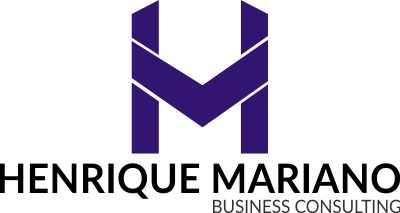Tool: Trello
Cost: free initial version
Site: www.trello.com


Above there are some good use practices about kanban tool based in my experience in business and social projects:
On the top bar of the tool:
- On the left, you can select the kanban board.
- You can create one for each project, transferring the cards between them.
- At side you can do searches by name and content of cards.
- On the other side (right) you can add new cards (button +), review your profile (button with photo + user), see the information (button i) and check notifications (button with a bell).
In the middle of the screen, columns (lists) of cards are displayed, where you can:
- Add new cards (activities or issues) from the end of the column.
- Move cards by dragging between the columns.
By clicking on the pen in the upper right corner of each card you can change your title and also access a quick menu on it.
If you click on the card, it opens the detail screen for adjustments.
On the right side of the Card detail screen, you can add:
- Members involved in the activity (only those who have real action, it is possible to subscribe to be notified).
- Labels (marks) informing that the card situation:
- Criticality: Low, Medium or High
- Critical – maximum attention
- Blocked – card blocked by another activity (include in the description the link to the card that generates the block).
- For the discussion – card that needs to be discussed at the next meeting.
- Ready – card ended after implementation, testing and approval.
- Checklists – list of activities that need to be done to complete the card.
- Due date – deadline for completion that will be controlled in the tool.
- Attachment – it is possible to attach files.
On the right side of the Card detail screen, you can also perform the following actions:
- Move – move the card to other columns (lists).
- Copy – make the copy of the card (duplicate).
- Subscribe – be notified of any adjustment in the card.
- Archive – remove the card from the lists by moving it to a segregated area.
- Delete (only appears for archived cards) – deletes the card permanently.
On the left side of the Card detail screen, you can see:
- Registered members
- Labels marked
- Due date
- Card Description
- Attachments
- Registered Comments
- Activity – history of changes made (log).
There are other functions that are paid including changes in the background, including other stickers, etc., but with this free version you can get a lot of productivity.
Common situations of workaround:
- If you lose the card, probably he was dragged or archived, to find it, just type some reference in the text search and move to a known place or unarchive it.
- Items with expired deadlines appear with a marking in red and a reference in the notification.
Control model applied in project management with hybrid methodology (Traditional Approach + Agile Development):
- Create a board for each front including the team members involved in the development of activities between the columns, as well as the GP – Project Manager responsible for updating the supporting columns listed below:
- Identification (Objectives, participants involved etc.);
- Issues (risks, disputes etc.);
- Control Panel (Status report to PMO).
- Create another consolidation board (Dashboard) to manage all fronts, generating a column for each front including in the column name the responsible GP.
- In this context, generate a detail card for each specific board and connect it to the same card in the specific board (including a link to this card in the Description field), therefore from the Dashboard is possible to deepen (drill down) to the specific board and can check in more detail the evolution of the activities, risks, etc.
Below the link to the templates in Trello tool:
- Dashboard: https://trello.com/b/tjKGxJJn/
- Detailed board: https://trello.com/b/H0PgnkUl/
Explanatory videos about Trello tool:
In conclusion, this approach allows good control of activities involving dozens of people, generates good visibility and interaction about the evolution of activities, and a zero cost considering that it was used the free version of the tool.
And what do you think about this model? Do you use other solution or approach?
Share with us and we will develop together.




Comentários do Facebook